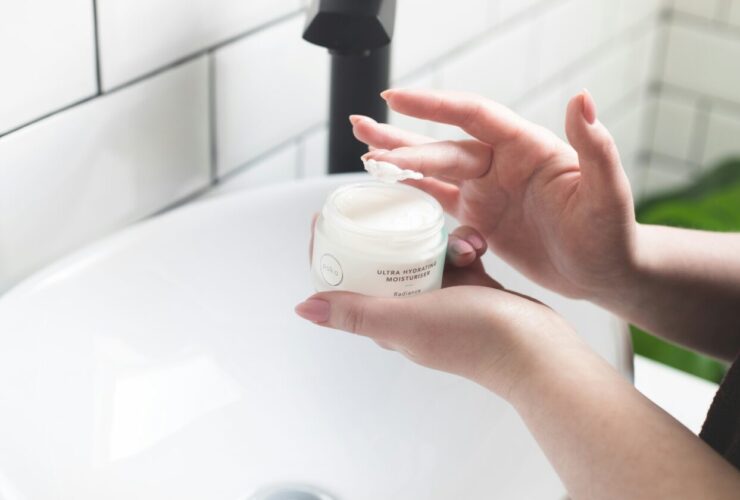In the quest for flawless skin, incorporating the right ingredients into your skincare routine can make all the difference. Among these, Tretinoin stands out as a stalwart in the battle against acne, hyperpigmentation, and aging. But how do you effectively integrate this dermatologist-recommended compound into your daily regimen? Let’s explore the steps to seamlessly add Tretinoin to your skincare routine for maximum effectiveness and minimal irritation.
Understanding Tretinoin
Tretinoin, a derivative of Vitamin A, boasts many benefits for the skin. From promoting collagen production to speeding up cell turnover, its effects are nothing short of transformative. However, harnessing its full potential requires a strategic approach considering its potency and potential side effects.
How to Add Tretinoin to Your Skincare Routine
- Step 1: Consultation with a Healthcare Professional
Before embarking on your Tretinoin journey, consult a dermatologist or skincare expert. They will assess your skin type, concerns, and medical history to determine the most suitable Tretinoin strength and application frequency for your needs.
- Step 2: Start Slow and Low
Begin your Tretinoin regimen with a low concentration, typically from 0.01% to 0.025%. Apply a pea-sized amount to clean dry skin once or twice a week. Gradually increase the frequency as your skin adjusts, aiming for nightly use.
- Step 3: Proper Application Technique
Apply Tretinoin at night to optimize its effectiveness, as sunlight can degrade its potency. After cleansing and drying your face, gently massage Tretinoin onto the skin, avoiding the delicate eye and mouth areas. Follow with a moisturizer to mitigate dryness and irritation.
- Step 4: Sun Protection is Non-Negotiable
Due to Tretinoin’s photosensitizing properties, diligent sun protection is essential. Incorporate a broad-spectrum sunscreen with an SPF of at least 30 into your morning skincare routine. This not only protects your skin from harmful UV rays but also enhances the efficacy of Tretinoin.
- Step 5: Patience and Persistence
As with any skincare regimen, patience is critical when incorporating Tretinoin. Results may not be immediate, but consistent use over several weeks to months will yield visible improvements in acne, hyperpigmentation, and overall skin texture. Please stick to your routine, and the results will speak for themselves.
Additional Tips for Tretinoin Success
Consider using Tretinoin with other beneficial ingredients like hyaluronic acid and niacinamide to enhance its effects and minimize irritation.
If experiencing excessive dryness or irritation, scale back on the frequency of the Tretinoin application and consult your healthcare provider for further guidance.
Avoid pairing Tretinoin with harsh or incompatible skincare products, such as benzoyl peroxide or alpha hydroxy acids, to prevent irritation and maximize efficacy.
Conclusion
Incorporating Tretinoin into your skincare routine can be a game-changer for achieving clear, youthful-looking skin. By following these steps and tips, you can unlock the full potential of Tretinoin while minimizing the risk of irritation or adverse effects. Consistency is vital, so stay committed to your Tretinoin regimen, and you’ll soon reap the rewards of radiant, healthy skin.
References
PubChem. (2023). Tretinoin. @Pubchem; PubChem. https://pubchem.ncbi.nlm.nih.gov/compound/Tretinoin
Mukherjee, S. A., Date, A., Patravale, V. B., Hans Christian Korting, Roeder, A., & Günther Weindl. (2006). Retinoids in the treatment of skin aging: an overview of clinical efficacy and safety. 1(4), 327–348. https://doi.org/10.2147/ciia.2006.1.4.327
Was this helpful?

Joseph Emb, RDN
Founder of StyleVitally.com | Registered Dietitian & Wellness Advocate
What I Cover:
I’m passionate about connecting nutrition science and everyday wellness to help people live healthier, more vibrant lives. I write about evidence-based nutrition, mindful eating, sustainable lifestyles, and holistic well-being at StyleVitally.com.
My Background:
The University of Texas in Austin, where I earned my Dietetics diploma, laid the groundwork for my nutrition and health career. My training and hands-on experience taught me the science and art of using nutrition to enhance health and well-being.
Professional Journey:
I’m an RDN with lots of experience. I’ve helped people seeking tailored nutritional recommendations in clinical settings and community outreach programs. My constant learning and professional development ensure that my recommendations are always based on the latest evidence.
Ethical Commitment:
My practice prioritizes integrity. My content is transparent and objective, following the most significant ethical standards. I can give my audience unbiased advice because I’m not affiliated with food businesses or industry associations. I want to help people make informed health decisions that match their values and ambitions.
Join Me on the Wellness Journey:
Join me on the path to vitality and well-being, whether facing nutritional issues, seeking sustainable lifestyle changes, or simply wanting a better, happier you. We’ll discover how diet, mindfulness, and holistic well-being can maximize your potential.









